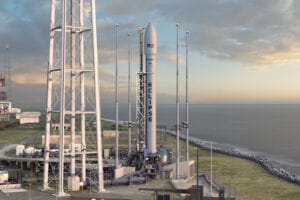As you may head to Luke Air Force Base this weekend for its “75 Years of Airpower” airshow, you may know that the base only trains pilots for two of our country’s fighter jets, the F-16 and the F-35.
Each plane was built in different generations, for a different time.
F-16 Fighting Falcon
Mission: The F-16 Fighting Falcon is a compact, multi-role fighter aircraft. It is highly maneuverable and has proven itself in air-to-air combat and air-to-surface attack. It provides a relatively low-cost, high-performance weapon system for the United States and allied nations.
Features: In an air combat role, the F-16’s maneuverability and combat radius (distance it can fly to enter air combat, stay, fight and return) exceed that of all potential threat fighter aircraft. It can locate targets in all weather conditions and detect low flying aircraft in radar ground clutter. In an air-to-surface role, the F-16 can fly more than 500 miles (860 kilometers), deliver its weapons with superior accuracy, defend itself against enemy aircraft and return to its starting point. An all-weather capability allows it to accurately deliver ordnance during non-visual bombing conditions.
Background: The F-16A, a single-seat model, first flew in December 1976. The first operational F-16A was delivered in January 1979 to the 388th Tactical Fighter Wing at Hill Air Force Base, Utah. The F-16B, a two-seat model, has tandem cockpits that are about the same size as the one in the A model. Its bubble canopy extends to cover the second cockpit. To make room for the second cockpit, the forward fuselage fuel tank and avionics growth space were reduced. During training, the forward cockpit is used by a student pilot with an instructor pilot in the rear cockpit.
In combat: U.S. Air Force F-16 multirole fighters were deployed to the Persian Gulf in 1991 in support of Operation Desert Storm, where more sorties were flown than with any other aircraft. These fighters were used to attack airfields, military production facilities, Scud missiles sites and a variety of other targets. Since Sept. 11, 2001, the F-16 has been a major component of the combat forces committed to the war on terrorism flying thousands of sorties in support of operations Noble Eagle (Homeland Defense), Enduring Freedom in Afghanistan and Iraqi Freedom.

F-35A Lightning II
Mission: The F-35A is the U.S. Air Force’s latest fifth-generation fighter. It will replace the U.S. Air Force’s aging fleet of F-16 Fighting Falcons and A-10 Thunderbolt II’s, which have been the primary fighter aircraft for more than 20 years, and bring with it an enhanced capability to survive in the advanced threat environment in which it was designed to operate. With its aerodynamic performance and advanced integrated avionics, the F-35A will provide next-generation stealth, enhanced situational awareness and reduced vulnerability for the United States and allied nations.
Features: The conventional takeoff and landing (CTOL) F-35A gives the U.S. Air Force and allies the power to dominate the skies – anytime, anywhere. The F-35A is an agile, versatile, high-performance, 9g capable multirole fighter that combines stealth, sensor fusion and unprecedented situational awareness. The F-35A’s advanced sensor package is designed to gather, fuse and distribute more information than any fighter in history, giving operators a decisive advantage over all adversaries. Its processing power, open architecture, sophisticated sensors, information fusion and flexible communication links make the F-35 an indispensable tool in future homeland defense, Joint and Coalition irregular warfare and major combat operations.
Technology: The F-35’s helmet mounted display system is the most advanced system of its kind. All the intelligence and targeting information an F-35 pilot needs to complete the mission is displayed on the helmet’s visor. The F-35’s electronic sensors include the Electro-Optical Distributed Aperture System (DAS). This system provides pilots with situational awareness in a sphere around the aircraft for enhanced missile warning, aircraft warning, and day/night pilot vision. Additionally, the aircraft is equipped with the Electro-Optical Targeting System (EOTS). The internally mounted EOTS provides extended range detection and precision targeting against ground targets, plus long range detection of air-to-air threats.
Background: The F-35 is designed to replace aging fighter inventories including U.S. Air Force F-16s and A-10s, U.S. Navy F/A-18s, U.S. Marine Corps AV-8B Harriers and F/A-18s, and U.K. Harrier GR.7s and Sea Harriers. With stealth and a host of next-generation technologies, the F-35 will be far and away the world’s most advanced multi-role fighter. There exists an aging fleet of tactical aircraft worldwide. The F-35 is intended to solve that problem.



